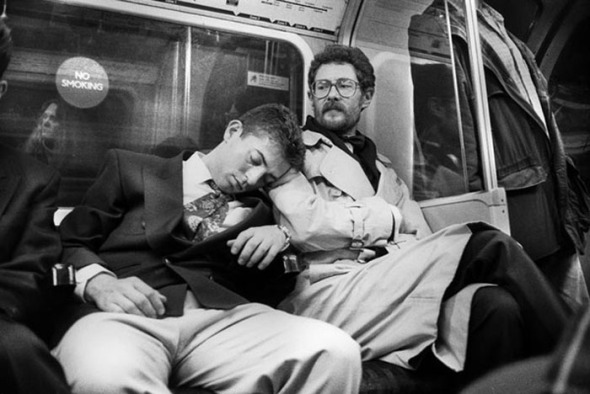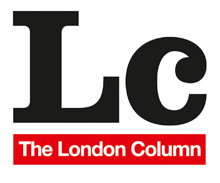Underground, Overground. Text: Andrew Martin, photo: Tim Marshall. (1/5)
Posted: May 28, 2012 Filed under: Transport | Tags: Andrew Martin, evening commute, the Tube, Underground Overground Comments Off on Underground, Overground. Text: Andrew Martin, photo: Tim Marshall. (1/5)Piccadilly line. © Tim Marshall 1991.
Andrew Martin writes:
In my boyhood, the system was not what it had been in the triumphalist inter-war heyday, and nor was it like the spruce, sparkling (if badly overcrowded), upgraded Underground of today. In the Seventies the system was run-down and demoralised. Road transport was the future; the Underground was being ‘managed for decline’, and the system was filthier even than the streets above. You were not to lean against the station walls, or that was your rally jacket ruined. In most of the stations about a quarter of the tiles would be broken. Sometimes the station name was meant to be spelled out by the tiles, and Londoners’ toleration of the position at, say, Covent Garden – rendered for years as something like ‘COV-TG-DEN’ – implied an impressive broad-mindedness on their part.
You could actually see the atmosphere in the stations: it was sooty, particulate. There is an Underground poster from the late Thirties by Austin Cooper that advertised something as un-mysterious as ‘Cheap Return Tickets’ but did so with an abstract image: a lonely searchlight trying to penetrate a jaundiced miasma. That was the Underground of my boyhood: a marvel of engineering but also a dream space, in which people of all classes and races would float past you, with the strange buoyancy of a passing carriage. In the case of people in your own carriage (or ‘car’, since the Underground is riddled with American railway terminology), you could look at them directly, or you could look at their reflections in the windows, and they would be sunk in their own dreams; all this under electric light, so that it always seemed – as it always still seems – to be evening on the Tube, which is my favourite time of day.
The text is from Underground, Overground: a passenger’s history of the Tube, published by Profile Books (also available here). The photos are from Tim Marshall’s series When a Tube train stops.


